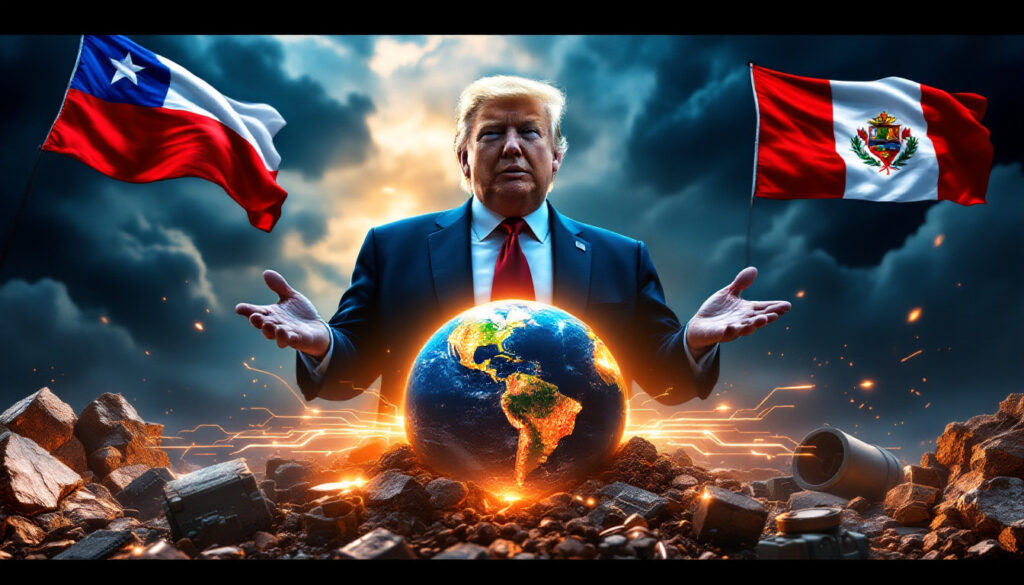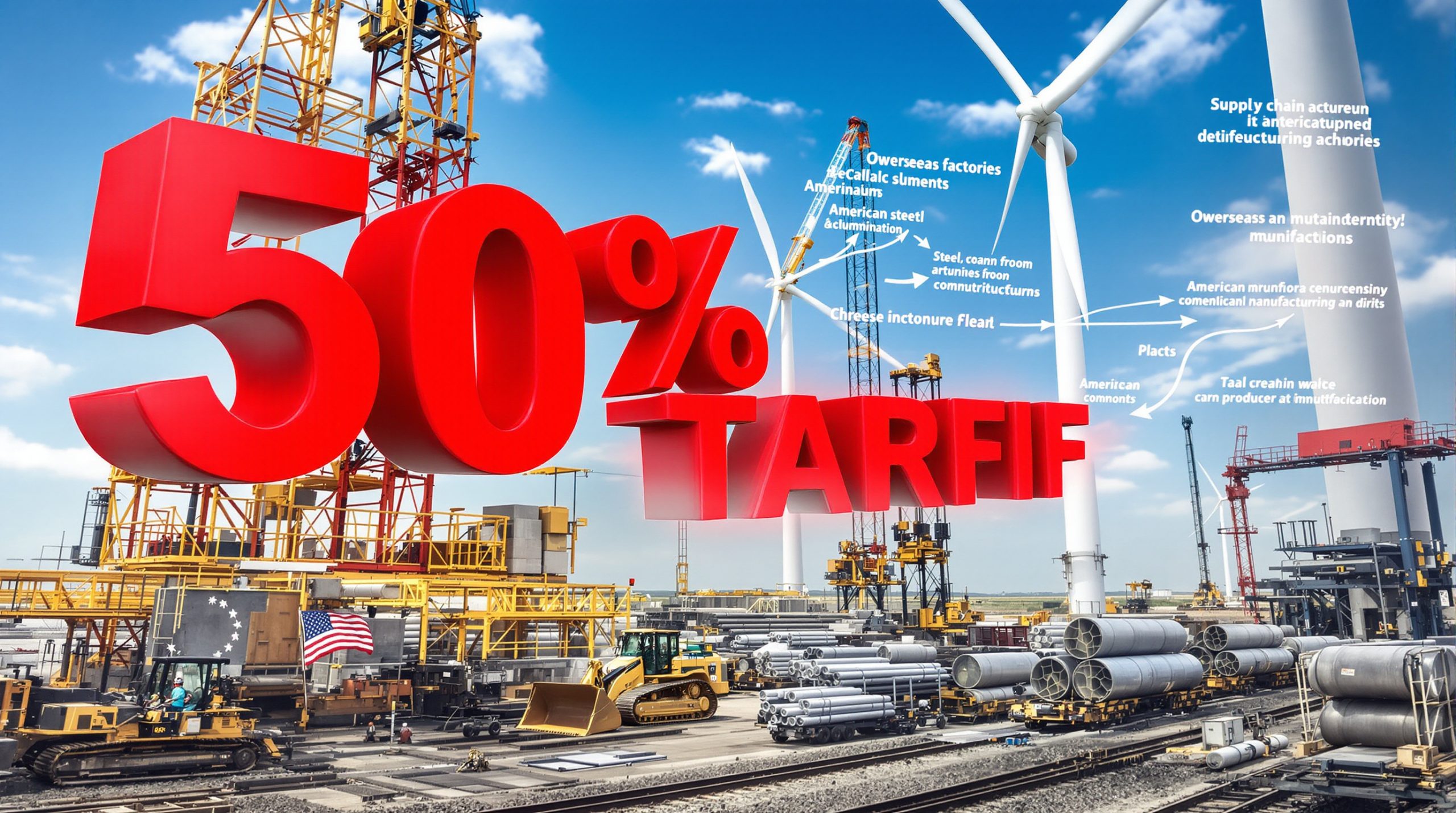Chile, Canada and Peru Push Back Against Trump Copper Tariff Probe
The Trump administration's initiation of a Section 232 national security probe into copper imports in February 2025 has sparked significant opposition from Chile, Canada, and Peru, which collectively supply 94% of U.S. refined copper and copper alloy imports. These nations argue that their exports enhance U.S. supply chain stability and pose no threat to national security, emphasizing the strategic risks of disrupting established trade relationships under free trade agreements. Critics warn that potential tariffs could inadvertently strengthen China's position in global commodities insights and markets, as suppliers may redirect exports to meet Chinese demand. The probe, expected to conclude within 270 days, underscores the tension between protectionist trade policies and the interconnected nature of critical mineral supply chains.
Why Are Top Copper Suppliers Opposing Trump's Section 232 Investigation?
Context of the Section 232 Probe
The Trump administration's February 2025 decision to investigate copper imports under Section 232 of the Trade Expansion Act of 1962 has drawn immediate pushback from Chile, Canada, and Peru. These countries collectively account for 94% of U.S. refined copper imports, with Chile alone contributing 70%. The probe, framed as a national security measure, mirrors previous Section 232 actions on steel and aluminum, which resulted in 25% global tariffs. However, the current investigation targets a mineral critical to defense, renewable energy, and technology sectors, raising concerns about cascading economic impacts.
Economic and Strategic Repercussions
The opposition from copper-producing nations centers on the argument that their exports are integral to U.S. industrial and defense capabilities. Chile's Ambassador to the U.S., Juan Valdes, emphasized that Chilean copper "contributes to the United States' supply chain security" and does not jeopardize national interests. Similarly, Canada's Mining Association highlighted the interdependence of North American defense industries, where Canadian copper supports advanced weapon systems and infrastructure. Disrupting these supply chains, opponents argue, would force the U.S. to rely on less stable or non-allied sources, potentially exacerbating vulnerabilities.
What Is Section 232 and How Is Trump Using It?
Legal Framework of Section 232
Section 232 grants the U.S. President broad authority to adjust imports through tariffs or quotas if the Commerce Department determines a national security threat. Unlike trade remedies targeting unfair practices, Section 232 requires no evidence of dumping or subsidies, making it a potent tool for unilateral trade restrictions. The Trump administration previously invoked this statute in 2018 to impose steel and aluminum tariffs, a move criticized by trade experts for straining alliances and inflating domestic production costs.
Timeline and Process of the Copper Probe
Initiated in February 2025, the copper investigation must conclude within 270 days, with a final report to the President by November 2025. The Commerce Department is analyzing whether import levels compromise domestic production essential for national defense. While the probe's outcomes remain uncertain, historical precedent suggests a high likelihood of tariffs, albeit with possible exemptions for strategic partners. Chile, Canada, and Peru submitted formal objections in March–April 2025, stressing their roles as reliable suppliers under existing free trade agreements (FTAs).
How Are Copper-Producing Nations Defending Their Exports?
Chile's Multifaceted Advocacy
As the world's largest copper producer, Chile has leveraged diplomatic and economic arguments to counter the probe. The American Chamber of Commerce in Chile warned that tariffs would redirect exports to China, which already absorbs 60% of Chile's copper output. This shift could undermine U.S. efforts to reduce dependence on Chinese critical minerals, a cornerstone of the Biden and Trump administrations' infrastructure policies.
Canada's Emphasis on Integrated Supply Chains
Canada, the second-largest supplier, underscored the role of copper in cross-border defense projects, including electric vehicle (EV) batteries and aerospace systems. Pierre Gratton of the Mining Association of Canada noted that tariffs would disrupt "efficient, integrated North American supply chains," giving Chinese firms a cost advantage in global markets. Canada also highlighted its adherence to high environmental and labor standards, contrasting with practices in non-allied nations.
Peru's Diplomatic Outreach
Peru, contributing 7% of U.S. copper imports, requested exclusion from any restrictions, citing its longstanding FTA with the U.S. and adherence to transparency in mining practices. The Peruvian government emphasized that its copper exports support U.S. renewable energy goals, particularly solar and wind infrastructure, which rely heavily on conductive materials.
What Are the Strategic Implications of Potential Copper Tariffs?
US-China Resource Competition
The probe reflects broader U.S. efforts to counter China's dominance in critical minerals, which control 60% of global copper refining capacity. However, tariffs risk alienating allies whose cooperation is vital for diversifying supply chains. For instance, Chile's state-owned Codelco has explored partnerships with U.S. firms to expand mining operations, but such ventures could stall if tariffs disrupt trade flows.
Impact on Free Trade Agreements
Tariffs on FTA partners would mark a departure from decades of U.S. trade policy, which has prioritized tariff elimination with allied nations. The U.S.-Chile FTA (2004) and U.S.-Peru Trade Promotion Agreement (2009) have facilitated $12 billion in annual copper trade, supporting thousands of jobs in both exporting and importing industries. Imposing tariffs could trigger retaliatory measures, as seen during the 2018 steel disputes, when the EU targeted $3.2 billion in U.S. goods.
Why Is Copper Strategically Important?
Role in Defense and Technology
Copper's high conductivity and corrosion resistance make it indispensable for advanced weapons systems, including hypersonic missiles and radar networks. The F-35 fighter jet, for example, contains 920 pounds of copper wiring, while a single electric vehicle requires 183 pounds. With the Pentagon prioritizing modernization, secure copper supplies are critical to maintaining technological superiority.
Green Energy Transition
Renewable energy systems depend on copper for power generation, storage, and transmission. A single wind turbine uses 4.7 tons of copper, and solar farms require 5.5 tons per megawatt. The International Energy Agency estimates global copper demand will grow by 40% by 2040 to meet net-zero targets, intensifying competition for resources. Rio Tinto's copper strategy exemplifies how mining companies are positioning themselves for this anticipated demand surge.
What Happens Next in the Copper Tariff Investigation?
Potential Outcomes and Industry Reactions
The Commerce Department may recommend tariffs ranging from 10% to 25%, with possible exemptions for Canada under the USMCA. Domestic producers like Freeport-McMoRan support tariffs, arguing they will revive idle mines, but manufacturers warn of price hikes in EVs and electronics. The Solar Energy Industries Association noted that tariffs could delay 15 GW of planned solar capacity, undermining climate goals.
Diplomatic Resolution Pathways
Chile and Peru have proposed quota systems or value-added processing partnerships to address U.S. concerns without tariffs. Canada, meanwhile, is advocating for a North American copper stockpile to ensure supply chain resilience. These proposals aim to balance domestic production incentives with the realities of global mineral interdependence.
FAQs About the Copper Tariff Investigation
How Might Tariffs Affect U.S. Consumers?
Tariffs would increase production costs for goods like EVs (by $300–$500 per vehicle) and household electronics, potentially slowing adoption rates and inflation. Understanding copper price dynamics is crucial for assessing these potential impacts on consumer markets.
Could the U.S. Source Copper Domestically?
The U.S. holds 35 million metric tons of copper reserves (5% of global totals), but expanding production faces regulatory and environmental hurdles, with mine permitting taking up to 10 years.
What Is China's Response?
China has not formally commented but is reportedly incentivizing smelters to increase copper stockpiles, anticipating redirected exports from Chile and Peru. Similar to recent copper supply disputes, this situation highlights the geopolitical dimensions of resource competition.
This report synthesizes the geopolitical, economic, and industrial dimensions of the copper tariff probe, underscoring the delicate balance between protectionism and global supply chain realities. As copper market dynamics continue to evolve, stakeholders across the industry are closely monitoring developments that could reshape international trade patterns.
Want to Spot the Next Major Mining Discovery Before the Market Does?
Stay ahead of critical mineral market movements with Discovery Alert's proprietary Discovery IQ model, delivering real-time notifications on significant ASX mineral discoveries like copper. Begin your 30-day free trial today to gain actionable investment insights before they become mainstream news.




